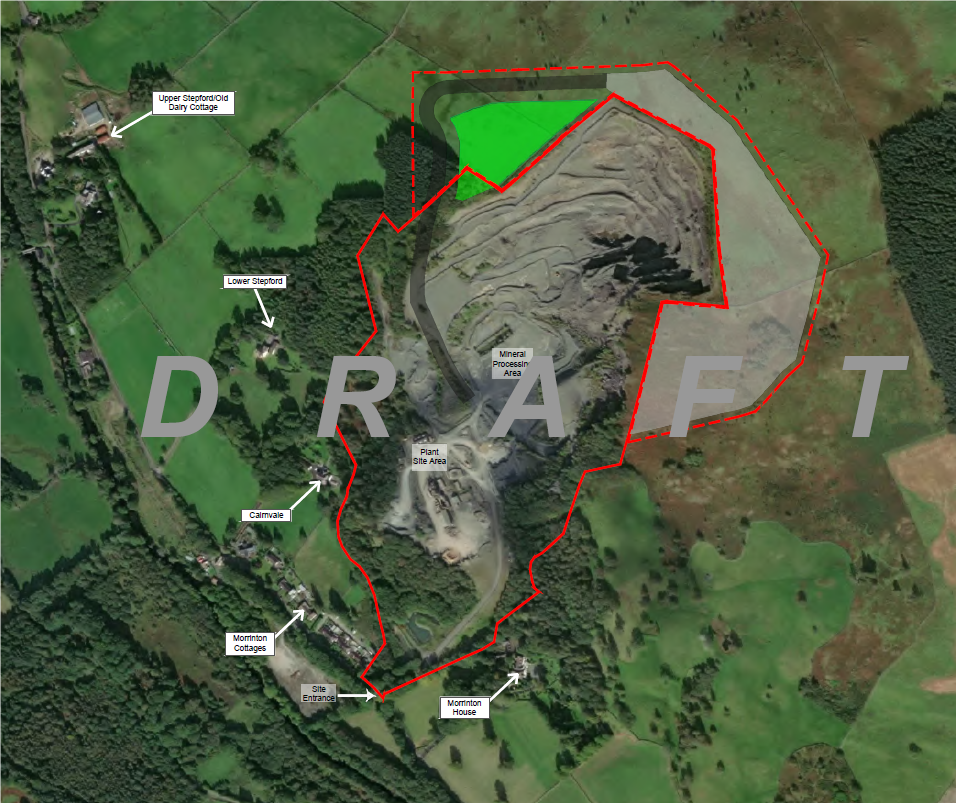Proposals
Morrinton Quarry

The remaining reserves of rock at Morrinton quarry are now quite limited and increasingly difficult to access. The bedding planes in the rock mean that to ensure safe long-term quarry working, the site would benefit from a redesign. Some older faces have been worked to steep angles, as was the practice in days gone by, but this has left some issues with face stability. Haul roads to the upper parts of the quarry are also quite steep.
Plans have therefore been drawn up that would provide for the long-term operation of the quarry in a safe, modern way and leaving secure final faces, that can be restored or regenerated and returned to the local community. This however, would involve the quarrying area and faces moving back in the grey areas shown below and introducing a new, more evenly graded haul road that would need to be created to access the upper faces.
The draft design will provide for the continued operation of the quarry for a period of 30 to 40 years (dependent on production and sales levels). It is not proposed to change working hours, working practices, introduce new plant or to increase the intensity of operations.
Working Areas
The future extension area comprises an additional extraction area of 6.3 hectares, but the application boundary encompasses the new haul road and the intervening landscaped overburden area. This results in a total site area of 10.7 hectares.
The current uppermost face would be pushed back by between 30 meters in the North West and widening to 200 metres in the South East. This will in turn allow the lower faces to be progress over the life of the quarry.
You can see in the photo below how tight the area to the base of the quarry is. The extension design would give enough width for the new quarry benches (or ledges) to be left wide enough on both axes of the quarry at all levels, which will support the safe restoration of the quarry at a later date.
Fly through
The video below shows the development of the new haul road and progress of the quarry faces over time, followed by site restoration.
